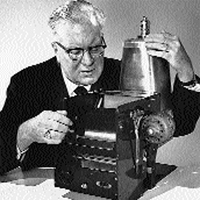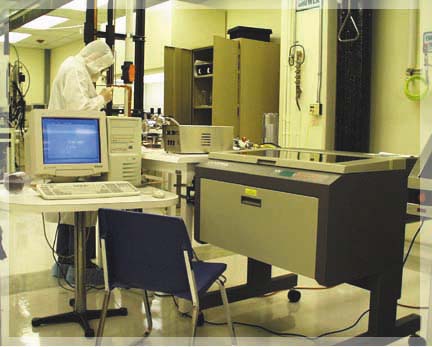 Optimizing Energy Efficiency
Optimizing Energy EfficiencyWe are the Premier Authorized Re-seller for Ricoh products & solutions in New Jersey. We also offer Managed Print Programs, Managed Network Services and Backup solutions. 732.977.1211
Friday, October 31, 2008
Total Green Office Solution "Part Two"
 Optimizing Energy Efficiency
Optimizing Energy EfficiencyThursday, October 30, 2008
Total Green Office Solution "Part One"
 Ricoh Products Are Cradle-to-Cradle Green
Ricoh Products Are Cradle-to-Cradle Green - Optimize energy efficiency
- Maximize recyclability
- Use materials resourcefully
- Control environmentally sensitive substances
- Maintain air qulaity
Green Lifecycle Analysis and Product Design
Did you know that many Ricoh products and supplies contain recycled plastics? For instance the MPC3500/MPC4500 can contain 21 percent recycled plastics, the weight of which equals 150 plastic soda bottles. In fact Ricoh sets annual targets to continually increase the amount of reused parts in our equipment.
Ricoh products are cradle-to-cradle green. At the onset of the production design stage, Ricoh contains a life cycle analysis to identify ways to minimize material and energy resources in every process associated with the design, manufacture and distribution of our products. This often results in innovative product design that makes efficient use of energy during use with parts and plastics that are standardized to ease the demanufacturing process at its end-of-life. Additionally, Ricoh products are manufactured in zero-waste-to-landfill plants, and product innovations a such as our PxP toner produces 35% less CO2 in the manufacturing process.
Thursday, October 23, 2008
Xerography Turns 70
 Who woulda thunk that 10-22-38 Astoria would go down in history. Just yesterday Xerography celebrated it's 70th anniversary. I can remember my first technicians class where we learned f Chester A. Carlson' Invention. Here's the history of Chester, Haliod and Xerox.
Who woulda thunk that 10-22-38 Astoria would go down in history. Just yesterday Xerography celebrated it's 70th anniversary. I can remember my first technicians class where we learned f Chester A. Carlson' Invention. Here's the history of Chester, Haliod and Xerox.Tuesday, October 21, 2008
Ricoh Announces New Universal Print Driver
 The Ricoh Universal Print Driver uses bidirectional communication to connect with and determine the capabilities of the printing device. For newer devices, the Universal Print Driver provides the full functionality of the device including advanced features and finishing capabilities.
The Ricoh Universal Print Driver uses bidirectional communication to connect with and determine the capabilities of the printing device. For newer devices, the Universal Print Driver provides the full functionality of the device including advanced features and finishing capabilities.Ricoh Americas Corporation, a leading provider of digital office equipment, today announced the latest release of its PCL6 Driver for Universal Print designed to expand the versatility of an organization’s printing network. The Printer Command Language (PCL) driver enables users to print from a wide range of systems without downloading separate drivers for each output device, reducing a company’s total cost of ownership. It is compatible with a wide range of PCL printers and multifunction products (MFPs) from Ricoh, as well as other major manufacturers.
Ricoh’s PCL6 Driver provides a single, flexible driver that eliminates the need for product-specific drivers in order to operate print devices in one networ
 k. Time-consuming tasks such as analyzing driver compatibility, installing drivers at individual workstations and retraining users on how to access specific print features are no longer necessary, streamlining the printing process throughout an organization. In addition, the PCL6 Driver shortens the certification process for new print devices and enables administrators to integrate new machines onto the network without installing any new drivers.
k. Time-consuming tasks such as analyzing driver compatibility, installing drivers at individual workstations and retraining users on how to access specific print features are no longer necessary, streamlining the printing process throughout an organization. In addition, the PCL6 Driver shortens the certification process for new print devices and enables administrators to integrate new machines onto the network without installing any new drivers.“The versatility Ricoh’s PCL6 Driver provides to a business’s printing capabilities truly simplifies operations, both for IT administrators and regular employees,” said Hede Nonaka, executive vice president, Ricoh Americas Corporation. “Managing multiple print drivers is a constant battle for an organization, particularly for companies with multiple printing devices and employees working remotely. We are excited to introduce the PCL6 Driver, as it increases workflow efficiency by enabling seamless printing from anywhere in the network.”
The PCL6 Driver for Universal Print is available as a free download from Ricoh’s website. For more information on all Ricoh products and solutions, please visit www.ricoh-usa.com.
Saturday, October 18, 2008
Former Mount Vernon Purchasing Agent Convicted of Aceepting bribe from Ricoh Americas Corp

WHITE PLAINS – The former head of purchasing for the Mount Vernon City School District was convicted Friday of bribe receiving, official misconduct and receiving unlawful gratuities.Arthur Rose, 49, of Mount Vernon, was convicted in Westchester County Court on two counts of bribe receiving as felonies, three counts of official misconduct as misdemeanors and one count of receiving unlawful gratuities as a misdemeanor.
Between mid-June and mid-July 2005, rose, the former head of purchasing at the school district, accepted a bribe of $3,500 from a sales representative of Ricoh Americans Corporation for his assurance that the company would receive a five year contract from the district for 73 digital copiers, support products and related services.On August 3, 2005, based on Rose’s recommendation, the school district gave Ricoh the contract which exceeded $1 million.
Between June and September 2006, Rose solicited and received a bribe in the form of a $10,000 donation to his church from the owner of Tri-State Supply Company, a custodial supply company, in exchange for future business, which was later awarded.When sentenced, Rose faces up to seven years in state prison.
Wednesday, October 15, 2008
Ricoh Launches New A4 Color MFP
 Awesome, to say the least, I haven't been very patient waiting to have our own A4 devices. To tell you the truth I would have been satisfied with monochrome devices, however to have three different COLOR models the MPC2030, MPC2050 (20ppm) and MPC2550 (25ppm) is a stunning addition to the Ricoh lineup of MFP's!!!
Awesome, to say the least, I haven't been very patient waiting to have our own A4 devices. To tell you the truth I would have been satisfied with monochrome devices, however to have three different COLOR models the MPC2030, MPC2050 (20ppm) and MPC2550 (25ppm) is a stunning addition to the Ricoh lineup of MFP's!!!Here's a few specs for ya:
An internal finisher with optional 2/3 hole punch
Standard duplexing at nearly 100% of mainframe speed.
Scan to email (w/LDAP), scan to folder (SMB, FTP, NCP), Network TWAIN and Scan to Media (USB/SD Card)
Full color VGA/touch panel monitor
1,200 dpi
Super G3 fax modem with JBIG compression, LAN fax, Internet Fax and auto Fax Forwarding to email/folder
Secure Print, DOSS and HDD Encryption
PxP supplies and a fast warm up time of 26 seconds
Monday, October 13, 2008
Wide Format Stacker Increases Productivity!

Monday, October 6, 2008
Lease Stimulus Information
 I'm going to re-post this for all recieved this in an email from a P4PHotel member.
I'm going to re-post this for all recieved this in an email from a P4PHotel member.- Taxpayer must purchase the qualified property during the 2008 tax year, subject to a binding lease or purchase contract signed in 2008
- Property must be placed in service in 2008
- Property has MARCS recovery paid of less than 20 years
The time to lease/purchase is now!
Economic Stimulus Act of 2008
Title I – Recovery Rebates and Incentives to
Business Investment
Section 102 – Increases in 2008: (1) the expensing
allowance for depreciable business assets to
$250,000: and (2) the maximum investment
phase-out threshold for such expensing allowance
to $800,000
Section 103 – Increases to 50% the amount of the
adjusted basis of certain depreciable property that
may be claimed as a deductible expense in 2008.
We do not offer or provide tax or accounting advice. For details
on the Economic Stimulus Act of 2008, please consult your
financial advisor and/or tax and accounting professional(s).
-=Good Selling-=
Thursday, October 2, 2008
Muratec 4550 "The Biggest Little MFP"!
 Well, sold another one of these today a Muratec MFX 4550, and another A3 system bites the dust!
Well, sold another one of these today a Muratec MFX 4550, and another A3 system bites the dust!Unplug Your Cellphone Charger
 This is very usefull and I for one have always left my cell phone charger plugged it, as a matter of fact I may have three or four of them plugged in around the house! Shame on Me! Enjoy!
This is very usefull and I for one have always left my cell phone charger plugged it, as a matter of fact I may have three or four of them plugged in around the house! Shame on Me! Enjoy!If you have a cellphone, have you ever noticed that your charger stays warm even when you are not charging your phone with it? That's because it is still draining electricity. "According to Future Forests, only 5% of the power drawn by cell phone chargers are actually used to charge phones. The other 95% is wasted when you leave it plugged into the wall, but not into your phone.
The lesson? Unplug your charger when you are not using it [or plug everything on a power strip and use the switch to turn it off instead of manually plugging and unplugging things. -TH]. If you don’t, it’s just wasting your money and adding to the pollution created by burning fossil fuels." We're fairly certain that there are no major engineering challenges that keep charger-makers from building in a feature that keeps the charger from using electricity when not in use; it's probably just cost-cutting. Of course, this advice about cellphones applies to everything that uses a vampire-like "wall wart" charger that doesn't turn off and keeps sucking juice for no reason .